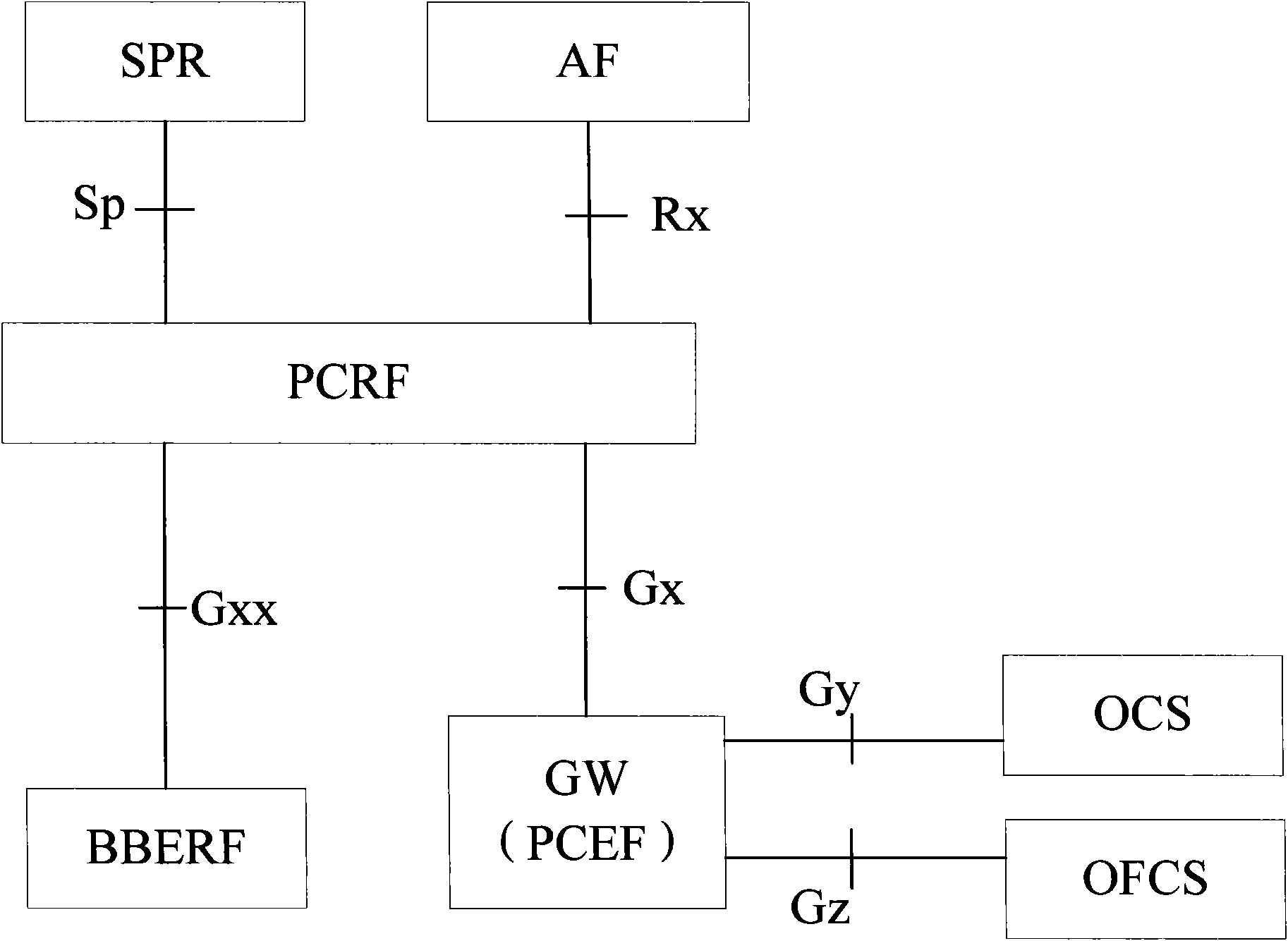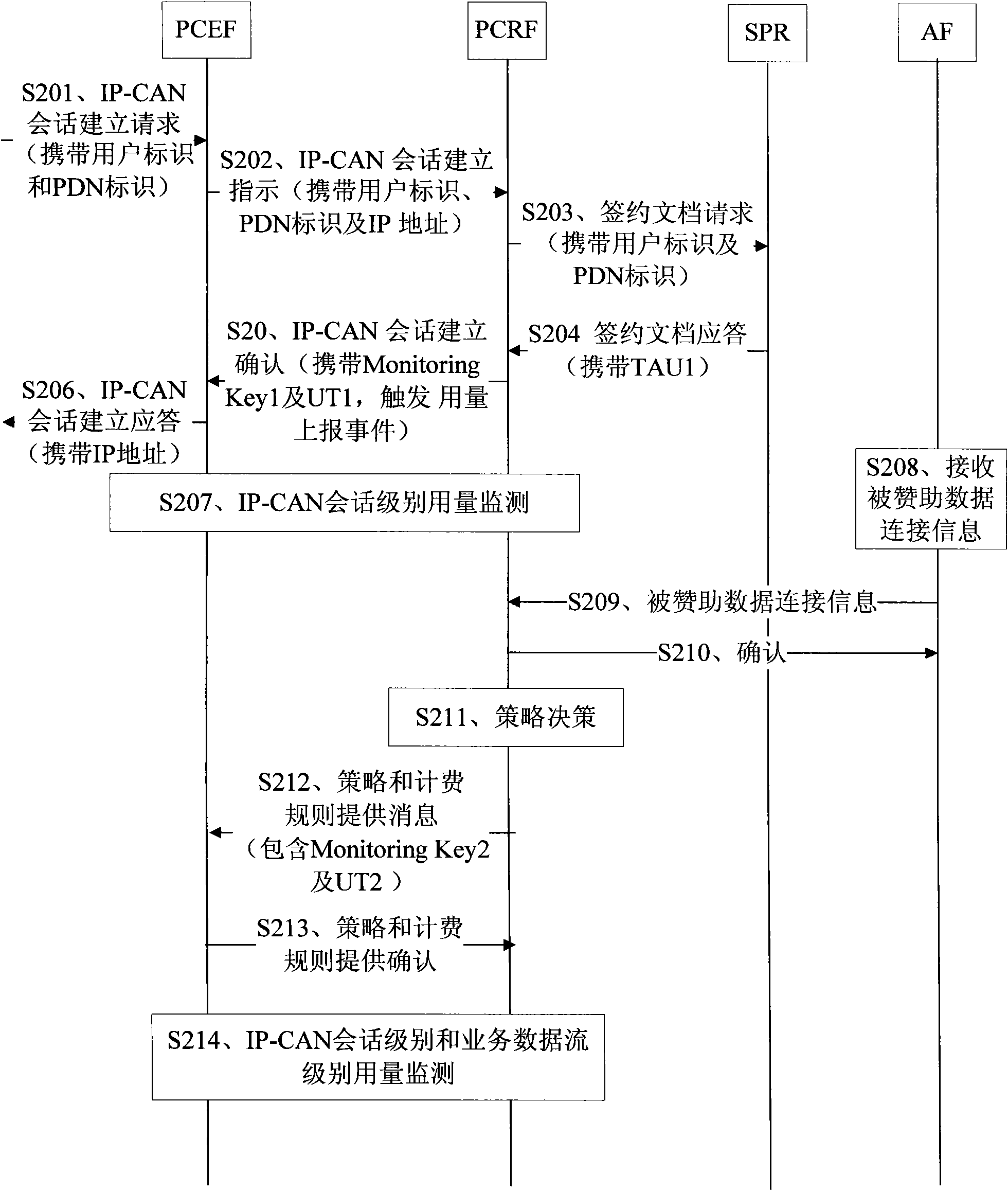Traffic monitoring method and policy and charging rules function entity
A functional entity and usage monitoring technology, which is applied in the communication field, can solve problems such as usage monitoring errors, and achieve the effect of precise policy control and decision-making
- Summary
- Abstract
- Description
- Claims
- Application Information
AI Technical Summary
Problems solved by technology
Method used
Image
Examples
Embodiment Construction
[0074] The method of the present invention comprises:
[0075] A. When the user's IP-CAN session level usage report condition is met, the PCEF reports the first usage report of the user's current IP-CAN session level to the PCRF;
[0076] Wherein, the user's IP-CAN session-level usage reporting condition may be: the value of the user's current IP-CAN session-level usage has reached a preset first threshold;
[0077] B. After the PCRF receives it, it requests the PCEF for the second usage report corresponding to the sponsored data connection accessed by the user through the IP-CAN session; where, before initiating the request to the PCEF, the PCRF can first determine whether the user has passed the The monitored IP-CAN session accesses the sponsored data connection, if so, it may initiate a request to the PCEF to request the above-mentioned second usage report;
[0078] C. After receiving the second usage report replied by the PCEF, the PCRF uses the difference between the val...
PUM
 Login to View More
Login to View More Abstract
Description
Claims
Application Information
 Login to View More
Login to View More - R&D Engineer
- R&D Manager
- IP Professional
- Industry Leading Data Capabilities
- Powerful AI technology
- Patent DNA Extraction
Browse by: Latest US Patents, China's latest patents, Technical Efficacy Thesaurus, Application Domain, Technology Topic, Popular Technical Reports.
© 2024 PatSnap. All rights reserved.Legal|Privacy policy|Modern Slavery Act Transparency Statement|Sitemap|About US| Contact US: help@patsnap.com










